
Blogging is central to just about any SaaS content strategy.
Pretty obvious, right?
So many companies fail to take full advantage of their blogs, though.
And arguably one of the biggest upsides of blogging for SaaS is the sheer wealth of post formats to choose from.
Seriously: there’s so much you can do with your blog’s real estate.
Rather than rehash the same lists or write posts purely for SEO, consider how you can incorporate some new ideas to keep your blog fresh.
Because if you’re tired of the same old blog formats and round-ups, chances are your readers are as well.
Below I’ve broken down 19 (!) SaaS blog post ideas to give your content strategy a much-needed boost.
1. How-tos and tutorials
If you’re a SaaS writer, how-tos are probably your bread-and-butter.
These posts are a goldmine for SEO because “how-to” queries dominate Google. After all, people flock to search engines because they’re looking for solutions. Your job is to provide the “how” to help.
The beauty of how-to posts is that they’re versatile. How-tos can cover general, top-of-funnel queries, hyper-specific questions from potential customers and everything in-between.
Let’s spitball some sample how-to blog posts that you might see as part of a SaaS content strategy:
- “How to use [tool/process] to save [time/money]”
- “[Keyword]: how to effectively do it yourself”
- “How to create a seamless [keyword] using [tool]”
Listen: the role of any given SaaS blog is ultimately to educate readers and help them solve real-world problems.
And so you can’t escape how-tos. That said, you can make your posts less generic by:
- Coming up with a compelling, benefit-driven premise and title
- Writing posts that address different levels of customer consideration
Companies like Miro manage to tick both of these boxes brilliantly with their how-to posts. For example, this post is a great top-of-funnel how-to that features actionable advice and light product mentions.
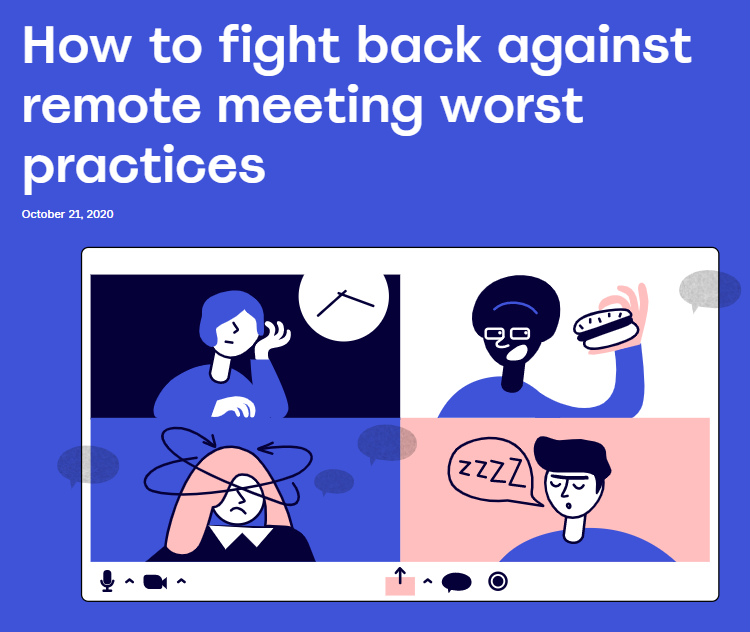
Meanwhile, this post is a more in-depth how-to that shows Miro’s product in action.

And here‘s a product-centric how-to that says “Hey, this is how one of our clients achieved a specific goal with us (and how you can do the same).”

2. Deep dive posts (“What is [x]…”)
Deep dive posts are in-depth, 3000+ word posts that do double duty of ranking for keywords and cementing a company’s authority.
The goal of these posts is to produce the go-to resource for a particular topic. Deep dives are the foundation of many of the best SaaS blogs.
This massive post from Pipedrive is a shining example of how to put together an “ultimate guide” that’s example-rich and covers pretty much everything you’d want to know about CRM.
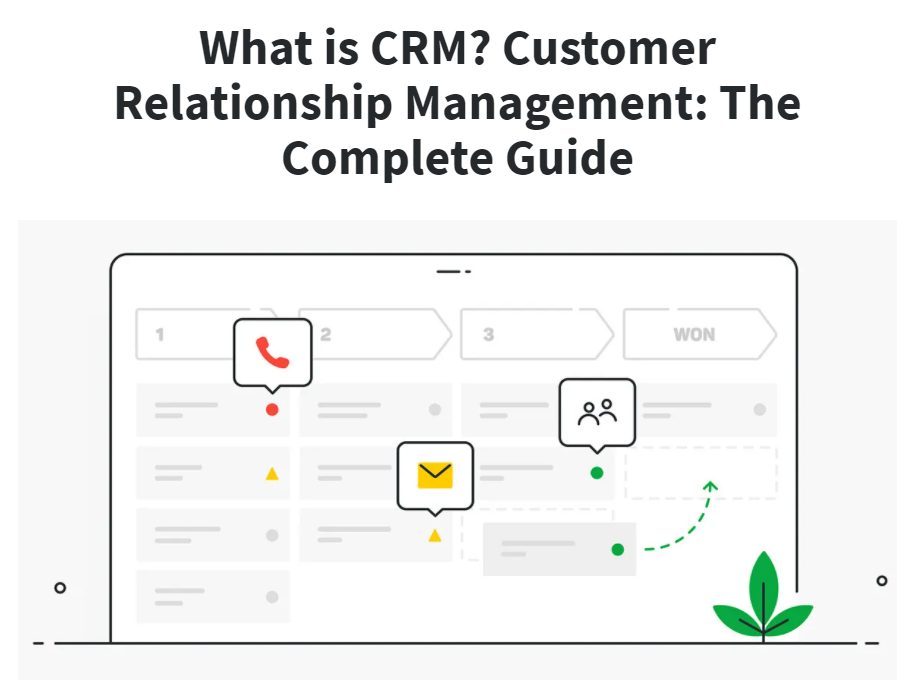
Keep in mind that not every SaaS blog post needs to be (or even can be) a deep dive.
Sure, these posts are great for SEO. That said, you should pick your battles in terms of which topics you dig deep into, though. Otherwise, you run the risk of droning on about any given topic or even overwhelming your readers. You don’t want your writers padding out their posts for the sake of word count, either.
When in doubt, dedicate your deep dive posts to your most important and high-reward keywords.
3. App round-ups
The concept here is simple: put together a list of industry tools and feature yourself among the best of ’em.
These posts are perfect for positioning. Want to break down the must-have product features that your competitors lack? Need to drive home how affordable your tool is versus others? Go for it.
And like many of the other SaaS blog post ideas we’ve looked at so far, this is another one that gets a lot of love from search engines. In-depth tool round-ups tend to grab Google’s featured snippets.
Here’s an app round-up from Calendly where they rank themselves among the top lead generation tools of 2021.
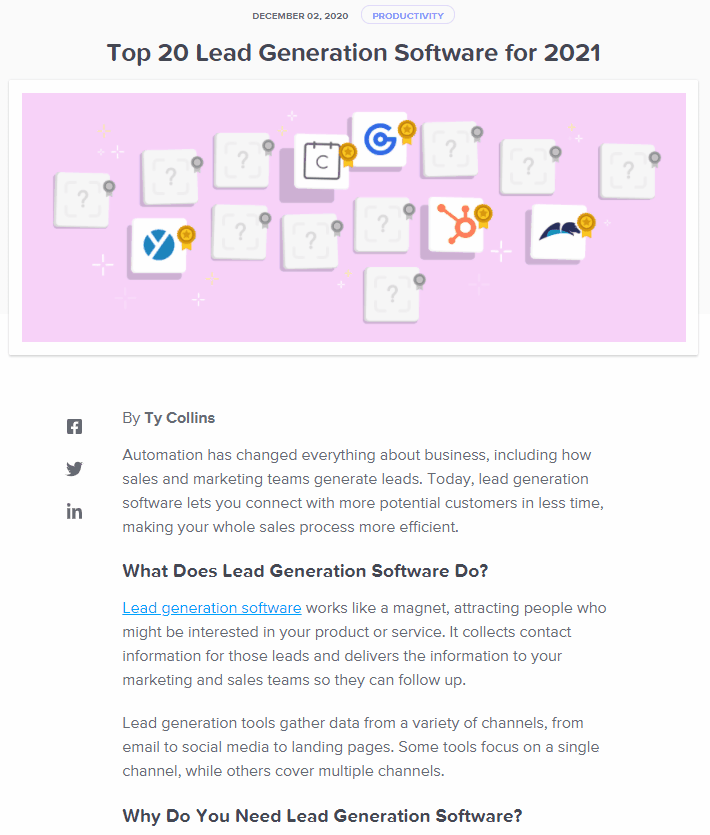
Pop quiz: is it self-indulgent to give yourself the top spot in your own list posts?
Not at all. Heck, it’s your blog. You have the power.
Just make sure that you provide context as to why your tool deserves to be #1.
Another key reason to give yourself a higher rank is to make sure that readers actually see what you have to say about your service. As noted in my guide to scannable content, the vast majority of readers won’t make it to the end of any given post.
As a side note, many app round-ups do give some concessions to competitors. This post I wrote for Sprout Social is actually an example of how to do this effectively. The point here is to showcase what your tool does best. Obviously, you shouldn’t just trash your competitors.
4. Statistic round-up posts
Statistics round-ups are a staple of any SaaS content strategy.
Given the wealth of reports and studies in the SaaS space, finding up-to-date industry statistics to blog about is a cinch. Additionally, bloggers are constantly on the hunt for stats to cite in their posts.
And so putting together a statistic round-up post is pretty low-hanging fruit that can build links as an added bonus. See the round-up below from Kinsta, for reference.
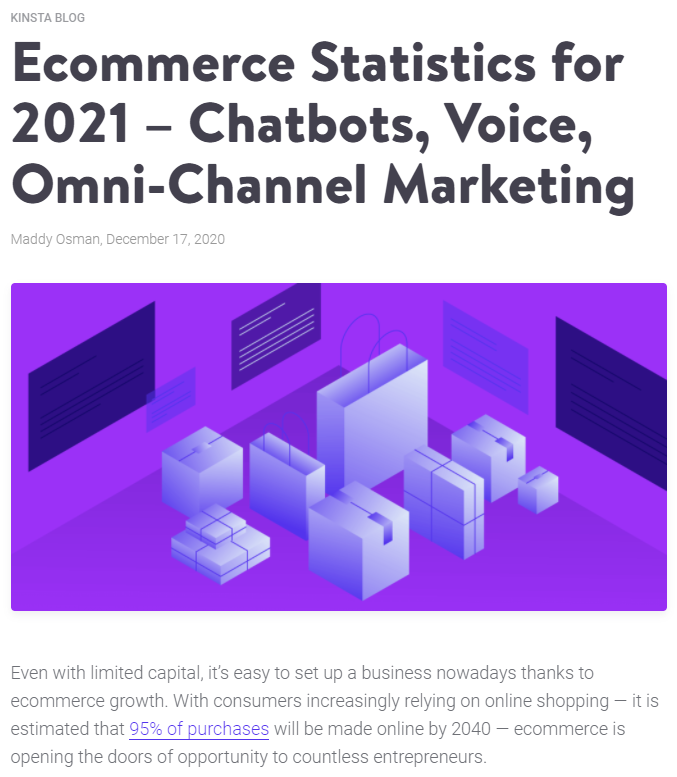
Just make sure that whatever statistics and reports you cite are up-to-date and come from reliable sources. Ideally, sources shouldn’t be more than two or three years old.
5. Culture-centric posts
Not every single SaaS blog post needs to be about software.
We’re seeing more and more companies put culture front-and-center. Emphasizing a positive and human company culture isn’t just good business: it’s a way to help your service stand out from the crowd.
For example, Asana has an subsection of their blog dedicated to culture-centric posts.
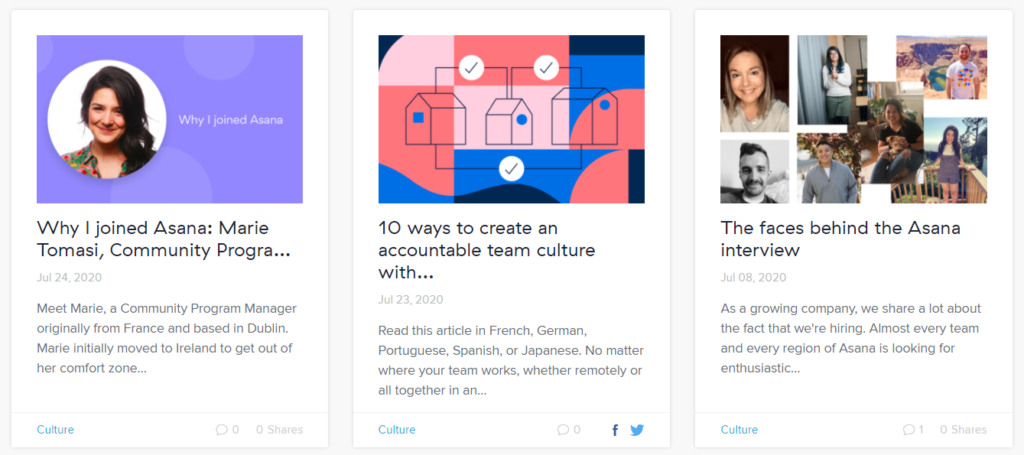
Some companies can actually find tie-ins between culture-centric posts and their product, but don’t sweat it if you can’t. Rather than stress out about SEO or selling, think about the inherent value of highlighting your business’ beliefs and values to your customers.
6. Industry interviews
If you’re looking for a much-needed break from long-form posts and round-ups, consider conducting an interview.
Think about companies that you work with and founders in your space. Conduct (or record) a quick back-and-forth, transcribe it, clean it up and format it as a blog post.
Boom. You’re done.
Check out how Groove has an entire section of their blog dedicated to interviews.

The upside of conducting interviews is that it takes two to tango. Not only can you promote the finished product, but so can the person on the other end of your interview. I tend to see a lot of founder-to-founder interviews get shared around on LinkedIn, for example.
7. “Versus” posts
“Versus” posts are similar to app round-ups but focus on just two or three tools rather than a whole list.
Take Zapier‘s app comparison guides, for example.
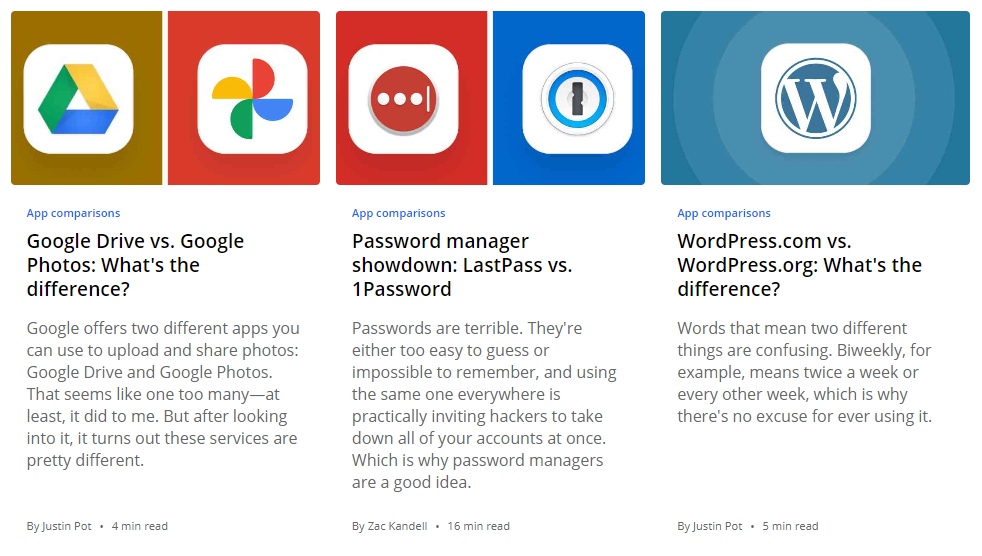
These posts allow you to go into greater detail on what a service has to offer. Versus posts are often written specifically for SEO.
Some businesses do versus posts with their own products against their direct competitors. If you want to be less confrontational, you can compare tools that you integrate with without declaring a definitive “winner.”
8. Case studies and client success stories
Case studies are among the powerful pieces of any SaaS content strategy.
And as noted in my round-up of effective SaaS case study examples, converting your customer success stories to blog posts is pretty straightforward.
For example, Databox dedicates a portion of their blog content to case studies. If you’re regularly gathering testimonials and positive feedback from clients, you should totally do the same.
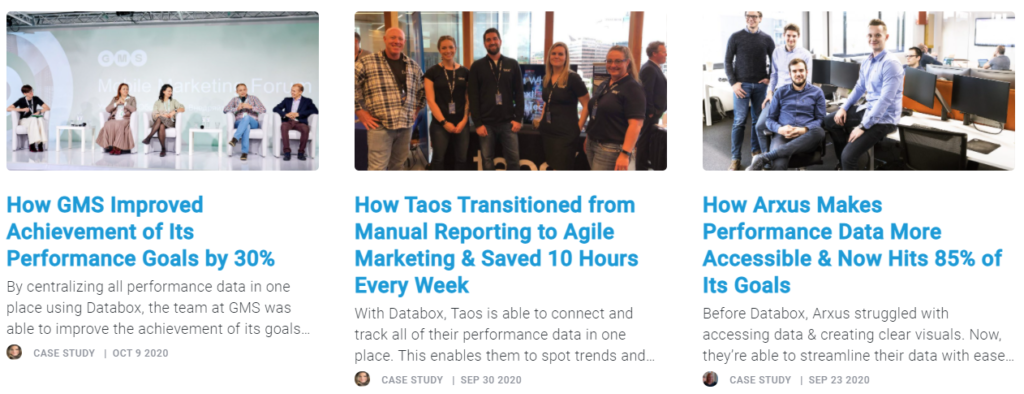
9. Research report previews and summaries
If you put together a lead magnet such as a report or whitepaper, previewing it in a brief blog post is a no-brainer.
Simply show off some of your most important findings in a few hundred words to give readers a taste. Below is an example of a blog post from Socialbakers that does exactly that.

Given the time and legwork required to put together a brand new report, promoting it on your blog should be a top priority. This is a great example of SaaS blog post ideas that allow you to double-dip your existing marketing content.
10. “Alternatives” posts
“Alternatives” posts are a sort of hybrid between app round-ups and “versus” blogs mentioned earlier.
These direct call-outs quite literally have the term “alternatives” in the title and are intended to attract leads shopping around for new tools. Here’s an example from Moosend:
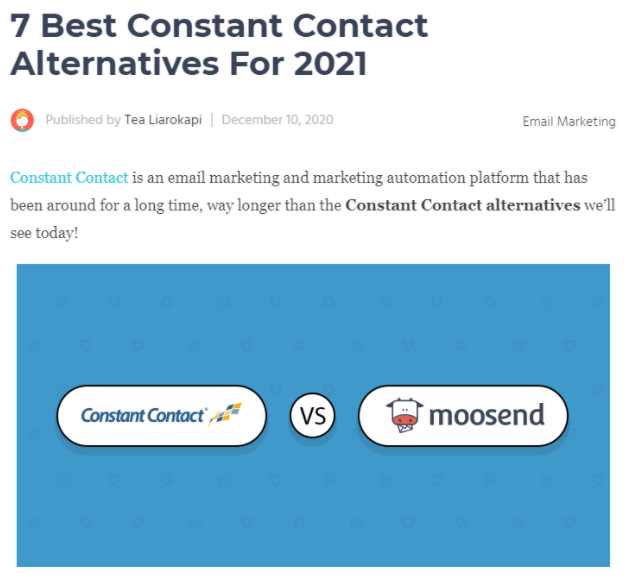
Like versus blogs, these posts are prime for SEO and help smaller or lesser-known tools position themselves against name-brand competitors.
11. Experiment posts
Experiment posts are popular among startups in the martech space.
From ad tests to marketing campaigns with notable results, these posts can highlight your company’s firsthand industy experience. Here’s an example from Clearbit.
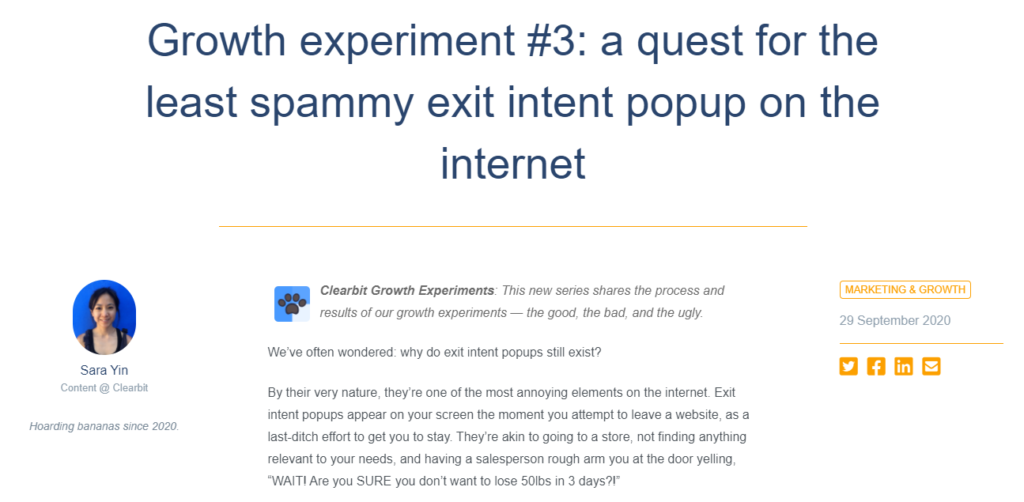
Experiment posts don’t necessarily need to be product-focused. They’re often conversational and represent a way to both educate and entertain your target audience.
If nothing else, they’re an opportunity to take folks behind the scenes of your industry.
12. Industry example posts
Here’s another popular type of round-up post that search engines totally dig.
Industry example posts compile instances of a service or business tactic “in the wild.”
For example, an email marketing tool might put together a list of top-tier newsletter examples or email signature examples. Similarly, a social media marketing service might show off creative Instagram ad campaigns in a list post.
Check out how Optinmonster‘s comprehensive list of lead magnet examples which go hand in hand with their conversion optimization solution.
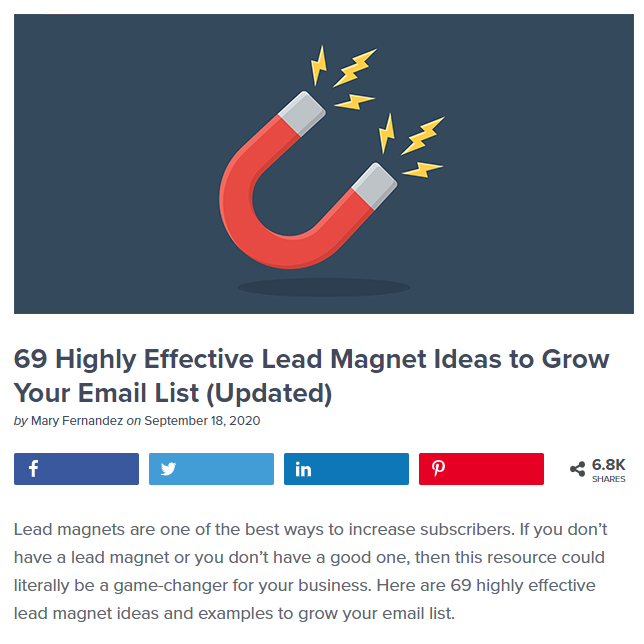
These types of posts allow you to target relevant keywords and give additional context to how your product works in a real-world setting. The more tangible your SaaS content is, the better. These posts help in that department.
13. Template and resource posts
Template and resource posts are a place to provide freebies to your leads or prospects, no downloads required.
For example, a SaaS sales tool might put together a list of sales call scripts or templates for their readers to adapt themselves. This post from Hugo providing a huge list of meeting agenda templates is a good example:

The purpose of these posts is to provide legitimate value to your readers in exchange for, well, nothing. These types of posts signal that your company is a helpful, authoritative resource for your target audience.
14. Infographic summaries
It’s well-documented that infographics are among the most-shared pieces of content on social media. They’re ideal for SaaS content marketing, too.
And just like any other downloadable mentioned so far, you should definitely dedicate a blog post to your infographics. Below is an example from Later:
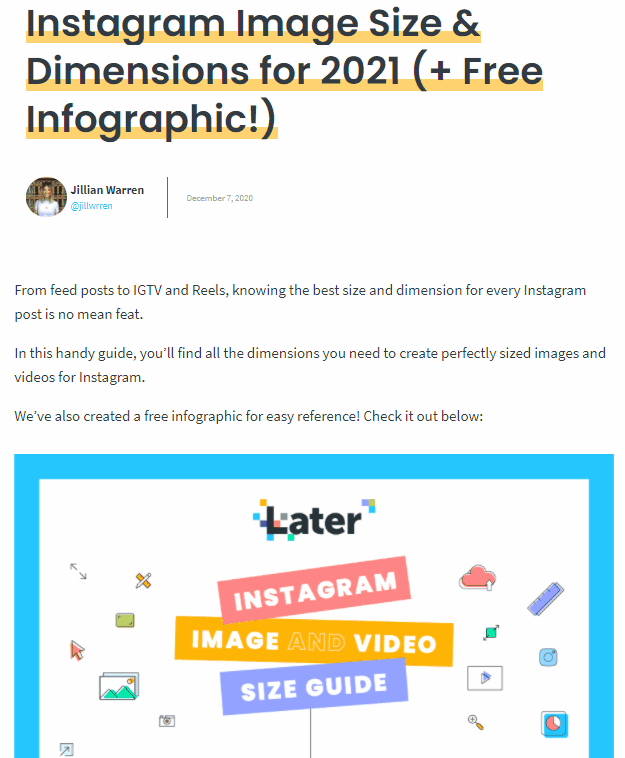
If you’re sick of strictly text-based posts, infographics can break the monotony.
For example, statistics posts and how-tos can be easily repurposed into a bite-sized infographic. There are plenty of design tools out there that can help, too (Canva, Visme, Venngage and Piktochart all come to mind).
15. Podcast previews and transcripts
More and more SaaS businesses (and founders) are getting into the podcasting game.
Whether it’s a preview, summary or transcript, featuring your podcast as part of your blog should be pretty straightforward. If nothing else, you should let your readers know about your latest episodes when they drop.
Here’s a podcast preview post from Loomly, for reference.
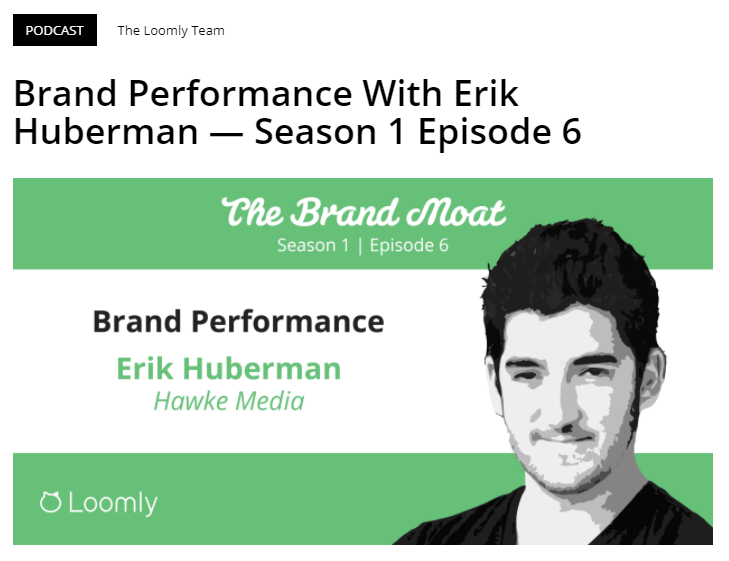
16. Event summaries
Although events are largely virtual right now, summaries and “what we learned” recap posts are still fair game. Peek the example from Paylocity below.
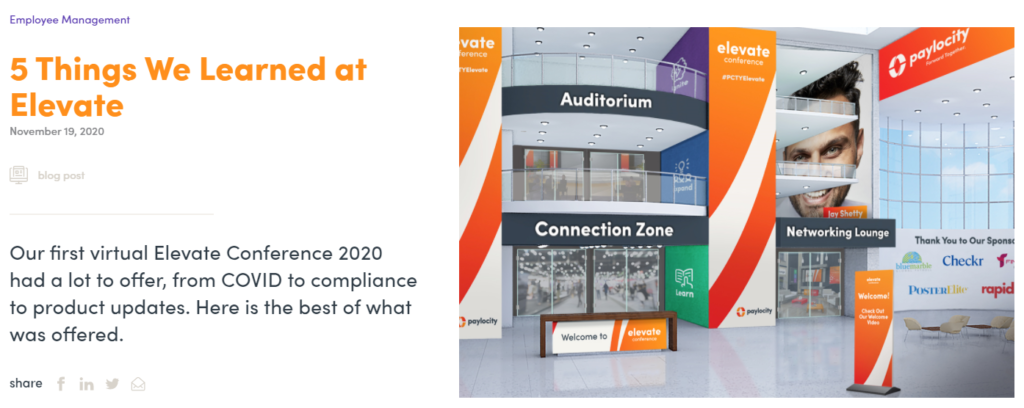
These posts can highlight that you’re an active participant in your industry and likewise represent a place to potentially break some news.
17. Webinar previews, summaries and transcripts
Webinars are all the rage right now.
Piggybacking on the points made in idea #9, your blog is a great place to give your audience a taste of your latest presentation. This is yet another example of how you can double-dip your content and further promote your business ‘educational materials.
Check out Zylo‘s webinar preview blog post as a prime example:
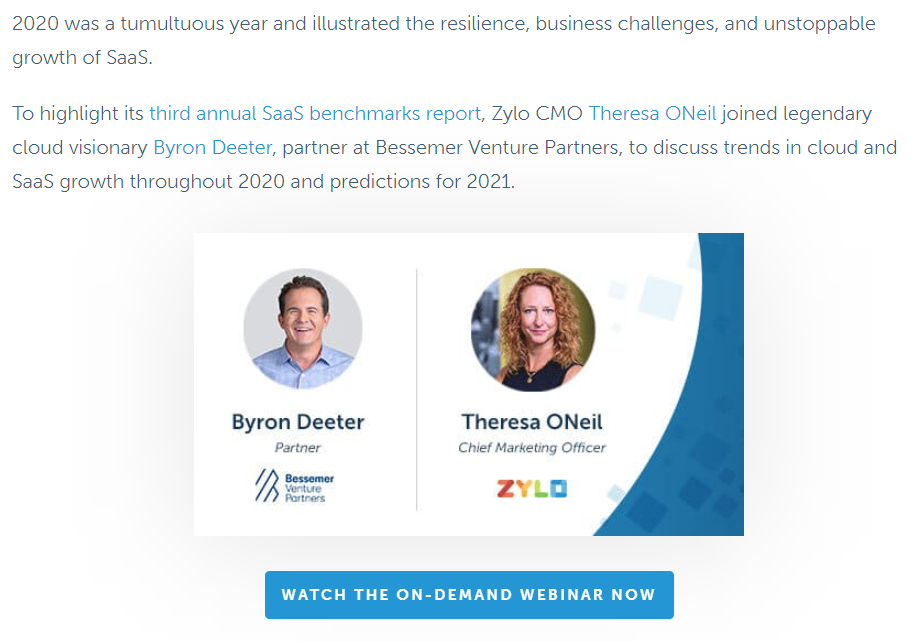
Keep in mind that beyond summaries and previews, webinars can easily be repurposed into full-blown blog posts. I’ve actually found myself doing this on behalf of clients recently.
18. Product updates and announcements
No huge surprises here.
If you’re rolling out new features to your product, let the world know.
Although some companies reserve their updates for email, blogging about ’em can help highlight to leads and prospects how you’re continuously improving your product. In other words, these posts make you look proactive. Below is an example of a product update blog post from Crisp:
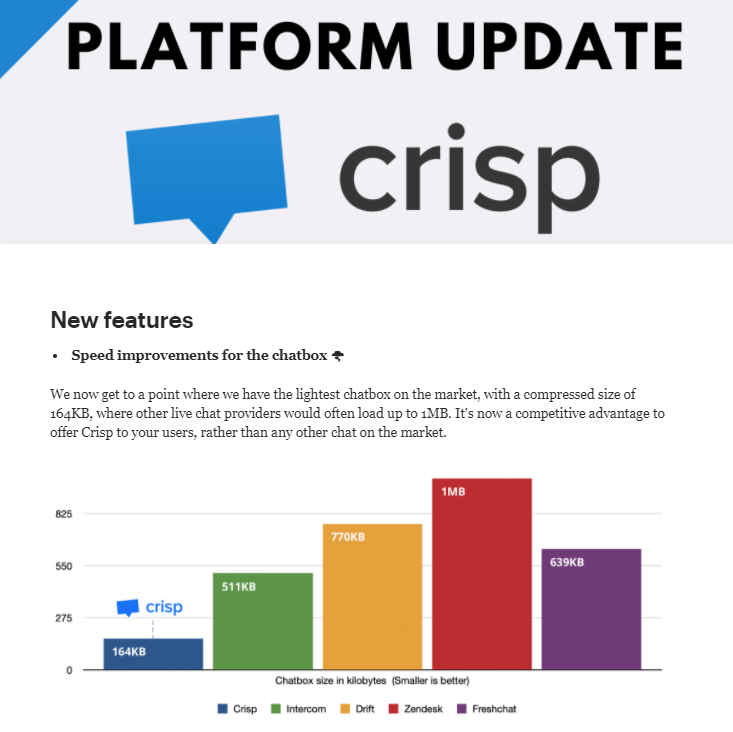
19. Employee Q&As and interviews
Employee spotlight posts allow SaaS startups to put their culture on display, all the while giving workers a place to speak their minds.
Awesome for employee engagement and a more conversational alternative to a traditional post, consider how you can integrate employee-centric posts into your content strategy. This one from Flock is a good example:
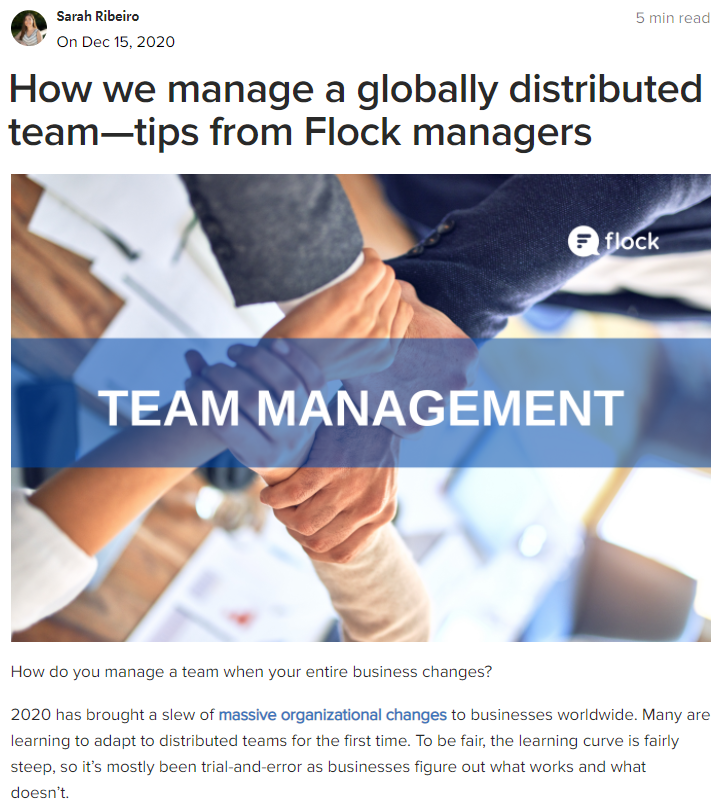
How many of these SaaS blog post ideas are part of your content strategy?
Although companies don’t need to cover all of the above, these various formats highlight just how much freedom SaaS companies have when it comes to blogging.
And even as I’m wrapping this post up, I can still think of more blog post ideas that didn’t make the cut.
That being said, what do you consider to be the most important SaaS blog post formats? Any crucial ones that I missed? Let me know on Twitter, comment below or shoot me an email.
This post was last updated on 1/15/2021.
Great piece. I will be borrowing a few of the suggestions as a marketing analyst in an SaaS company
Great some insightful points. I definitely be implementing some of the points that I learned here. when working on my strategy and creating content.